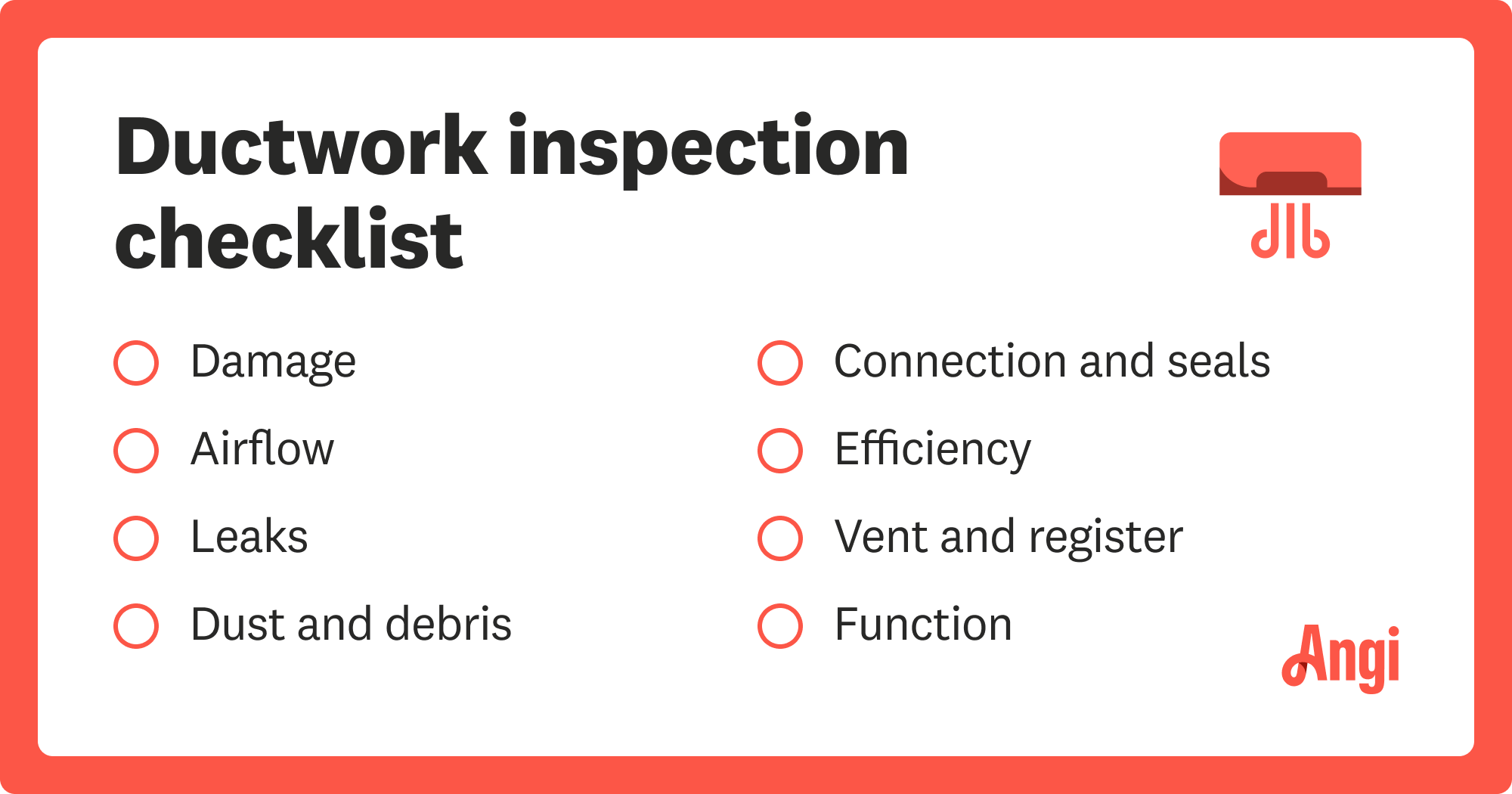
What you’ll pay in Columbus, OH, for furnace repairs depends on many factors. Here’s a breakdown of what can go wrong and the cost to fix those issues.
Check this maintenance task off your to-do list


Ductwork maintenance is an essential task that helps extend the life of your HVAC system and improves your home's air quality. A thorough inspection can spot leaks, damage, or other hazards that impact airflow. This ductwork inspection checklist will prepare you for your HVAC pro’s next visit.

A proper ductwork inspection involves more than a quick glance inside your vents. Here are some of the essential tasks your HVAC pro should complete.
Checking for damage is one of the most critical tasks when a professional inspects the ductwork. If any of the ducts show obvious (or not-so-obvious) signs of damage then it means extra debris, dirt, and dust can build up inside your home, plus irregular temperature control.
Your pro will be on the lookout for:
Visible signs of damage like cracks, holes, or disconnections
Properly operating vents and registers
Functioning blower and filters
Excess moisture in your HVAC system leads to multiple problems, including poor insulation, poor air quality, and aggravating allergies and respiratory issues. Pros use moisture meters and visual cues to inspect for signs of mold, mildew, water damage, or condensation on the ductwork and insulation.
Measuring airflow gives the professional a stronger indication of a potential leakage. When the ductwork doesn’t have an even airflow, it means temperature fluctuations and less energy efficiency for your system.
Your pro will measure the airflow at various points, checking for consistency, leaks, or unusual strain on your system. They’ll also inspect for blockages or restrictions in the ductwork. If they find a leak, they’ll either patch it up or schedule another appointment to complete a larger repair.
A pro must ensure all duct connections are secure and properly sealed. Ductwork with loose or faulty connections lowers heating and cooling efficiency.
Your HVAC pro will conduct an Efficiency Assessment to ensure the entire HVAC system operates optimally. This could identify issues like leaks or blockages that drive up your energy bills.
Insulation is a major component of ductwork, and you’ll likely notice higher energy bills and uneven temperatures in your home if it’s worn down or poorly installed. Proper insulation also helps control moisture growth in the ductwork. Your pro will inspect the insulation on and around the ductwork for wear, damage, and moisture. They may recommend improvements if your insulation is found lacking.
Obstructions and dirty filters severely impact the airflow of your system. Both make the HVAC work harder than it should. When it works harder, it leads to higher energy bills, shorter lifespan, and makes it less energy efficient.
Homeowners can regularly do this task to ensure their HVAC system operates efficiently. Just walk around your home and move furniture or any other items blocking your vents and registers.
Most HVAC filters should be replaced every three months, but it’s a good idea to inspect them monthly for debris and damage. Your HVAC pro will take a look at your filter during their inspection and most likely will change the filter for you at this time. HVAC filter replacement costs $10 to $50.
An essential part of ductwork inspection involves the interior of your ducts. The pro will open up the system and look for dust, debris, and allergens. If a significant buildup is found, they may recommend scheduling a cleaning, or they may perform light cleaning during inspection to remove any buildup or debris.
Once they’ve completed the inspection, your pro will document their findings and provide a detailed report. Based on the inspection results, they may offer recommendations for repairs, cleaning, or upgrades.

Professional air duct inspection costs an average of $230, though prices can vary from $140 to $380. A few factors impact the cost, including the size of your ductwork system, the type of inspection you’re getting (e.g., visual-only inspection versus using more advanced tools), and how easily accessible the duct system is.
Homeowners can conduct their own visual inspections and look for signs of damage or leaks, but a professional inspection from a local duct installer is much more in depth. Professionals have the knowledge and training for a more detailed visual inspection, plus the correct tools needed to check for less obvious signs that a homeowner can’t see on their own.
From average costs to expert advice, get all the answers you need to get your job done.

What you’ll pay in Columbus, OH, for furnace repairs depends on many factors. Here’s a breakdown of what can go wrong and the cost to fix those issues.

Exposed ductwork can be a smart choice even beyond aesthetics. Fortunately, exposed ductwork costs are relatively low, and easy access keeps repair costs to a minimum.

When your HVAC system is acting up, it could be the blower motor to blame. See how much blower motor replacement costs and what impacts the price here.

A whole-house humidifier costs between $400 and $800, but can have an ROI of 40%. Learn if adding this HVAC appliance is worth it for you.

There are a few different types of refrigerant for AC systems, but some contain environmental hazards. Learn about the five main types of refrigerant.

When you notice hot and cold zones in your home, it pays to learn how to balance airflow in your ducts to even out the temperature.